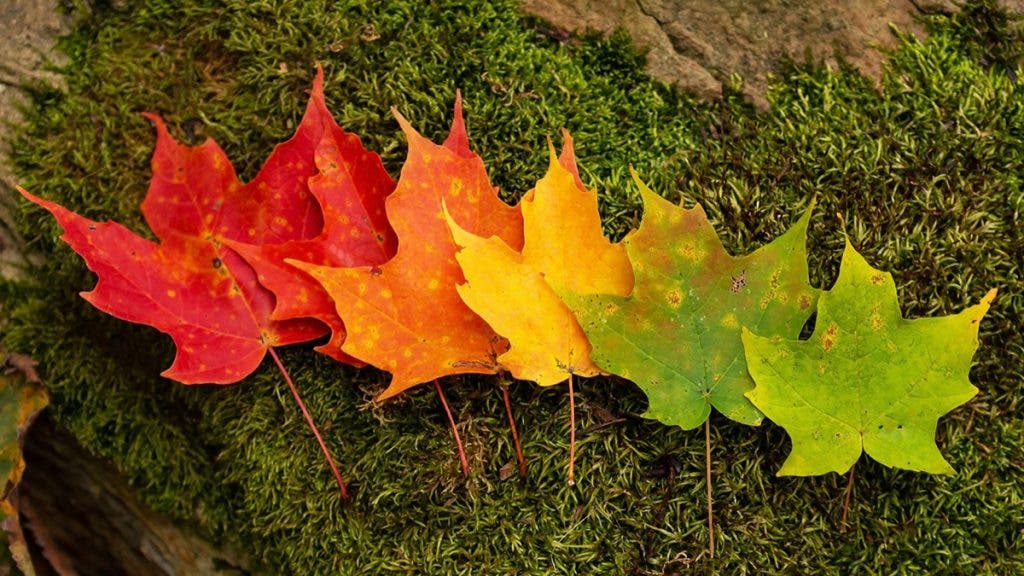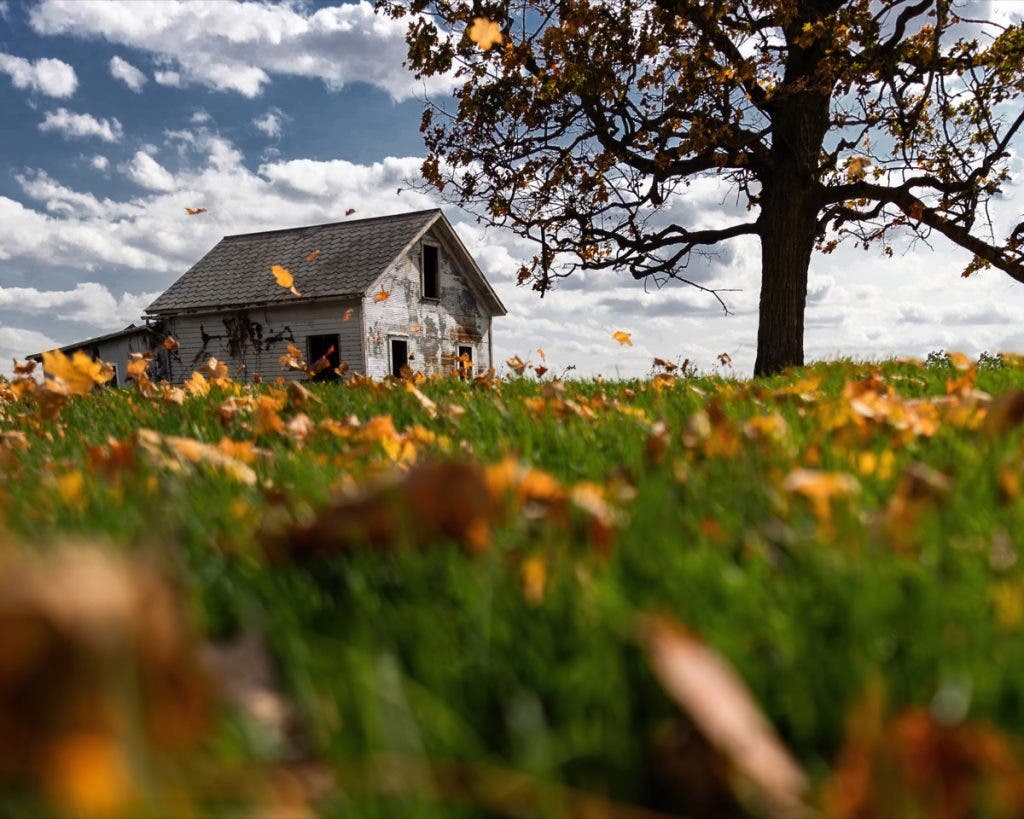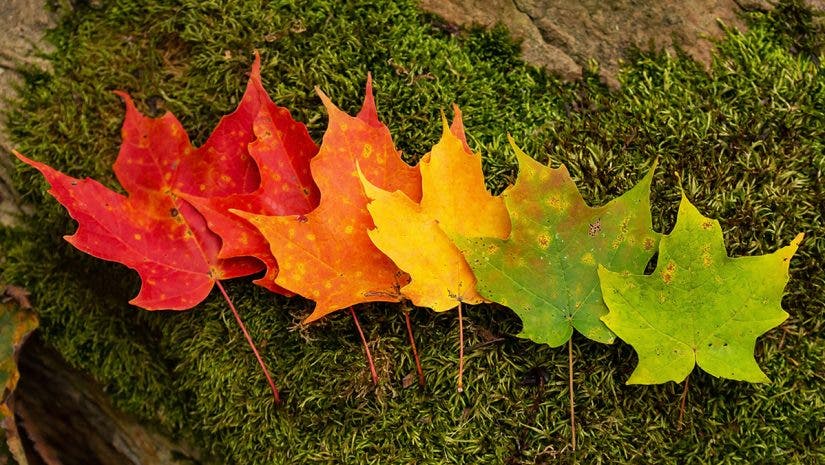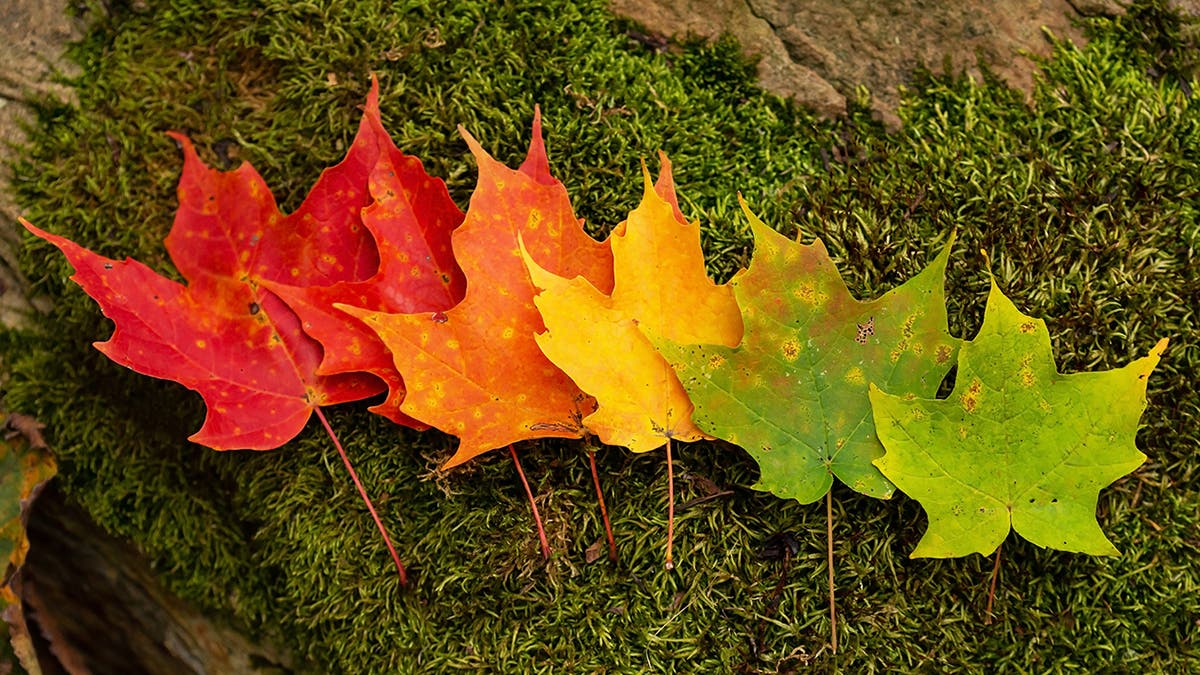Several years ago, while walking in a nearby park, I was stunned by the beautiful scenes that were constantly morphing and reshaping around me as the changing colors of the leaves contrasted with a deep blue sky and fast-moving clouds. Beyond inspired, I raised up my new 17-40 wide-angle lens, set a relatively small aperture (f8 or f11), and took what I was sure would be beautiful images. After all, how could I fail if I simply needed to record what I was seeing right in front of me? I checked my viewfinder after each shot, and I proceeded to delete image after image of nondescript orange-ish “blobs…” That moment of clarity helped by understand what I needed to do to improve my autumn photography.
Beyond the Visual
Looking back, I think that two issues were working against me. First, I was forgetting that my lens could not recreate a multi-sensory experience. Sure, our eyes are accustomed to interpreting complex scenes as they are centered in our field of view. However, we are also feeling the wind, smelling flowers, and hearing nearby birds sing as we take in that landscape. The beautiful orange and red leaves in the distance are just one small component of a beautiful autumn morning.
Information Overload
Secondly, I was just “jamming” too many details into the composition. In the workshops that I lead for the Digital Photo Academy, I often ask the following question to students when introducing the concept of composition. “When you were a child, would you rather have been assigned a thick book with no pictures and a million words in a tiny font, or a colorful pamphlet with captions guided by interesting illustrations?”
Taking a centered, wide-angle composition of autumn leaves can be the equivalent of the former. There are often just too many details in a beautiful landscape to take in, without a subject that stands out to “guide” one’s interpretation of the image. Many, much better photographers than I have created beautiful, detail-filled wide-angle images of gorgeous autumn scenes. However, more often than not, my attempts at those wide-angle shots have yielded relatively boring, forgettable results.
In the past several years, while exploring Ohio’s beautiful parks, I have come across a few techniques that I thought other photographers may have fun trying!
Focus on Details in Autumn Photography

First of all, it can be very effective to create a simple composition that focuses on relatively few details. Instead of using a wide-angle lens to take in an entire landscape, find one very interesting leaf, and get it as close to your camera as possible. The distance will depend on the minimum focusing distance of your lens, so make sure to research that online. In my experience, oak leaves have especially interesting vascular systems and beautiful color contrast.
Just remember that a flash (or a bright sun) can ruin this shot, because many leaves have a waxy coating that reflects the light and creates an almost “milky” texture. For this type of image, ISO 800 would be a great place to start. Try to find a shady area so that the sun does not reflect directly onto your leaf. Open up the aperture to f4 or f2.8 and set the shutter speed for as fast as possible to counteract any wind or hand movement. Hold the leaf with the hand that is not holding your camera. Then, turn your body until you find a background that is far enough away to be out of focus, and interesting without being “busy.”
When you download the image onto your computer, to emphasize the beautiful designs on the leaf, it can be very effective to use photo editing software to turn up the whites, turn down the blacks, and turn up the overall saturation, all very sparingly. Finally, turning up the contrast and clarity very slightly can make the image “pop”.
Create Deliberate Autumn Photography Images

In my nature photography, I try to “stay out of” the moments that I capture whenever possible. However, sometimes it is fun to create very deliberate images. For example, one evening while strolling around our backyard looking for something to photograph, I saw that the fallen maple leaves had many different hues. I decided to arrange a few on a mossy rock.
After cropping in on my computer and turning up the luminance on the greens, yellows, and oranges, I somewhat “accidentally” created an image that most of my friends and family liked much more than others that were much more difficult to create that season. One could create infinite “mosaics” using this autumn photography technique. Aperture is relatively unimportant, since the mosaic itself has very little depth. Anything smaller than f4 will be great. ISO 800 will allow for shutter speeds fast enough to counter any hand movement. Now, all you need to do is search your local leaf pile for your favorite shades of autumn.
Autumn Photography: Get Low and Wait for it

As in almost all types of photography, getting low to the ground can draw the viewer into the scene and make the photograph much more of an “experience” than something to view from afar. As I was pumping gas in a rural area near Interstate 71, I saw an interesting old house in the field next to me. I attached my 24-millimeter lens, put the camera on the ground in the grass, and waited for a gust of wind.
I decided that my focal point would be the house in the distance, and that I would roughly follow the “rule of thirds,” placing it in the upper left of the image. Luckily, the tree in the upper-right provided some asymmetrical balance. When putting the lens in the grass, even at a smaller aperture of f5.6 or f8, the leaves and blades of grass directly in front of the camera will be just out of focus enough to add depth. Because of its low angle, the camera cannot “see” the area in front of and behind the subject that would be in the wide depth of field caused by a relatively small aperture.
For this shot, as soon as the wind began to blow leaves, I took as many photos as I could. When I got home, I searched through the files and found the image with the most interesting scattering of leaves. On the editing side, turning up the “hue” of the greens slightly can help differentiate the grass from the yellows and oranges of the leaves. Then, turning up the luminosity of those yellows and oranges very slightly can make that contrast even more pleasing and apparent.
Autumn Photography AKA Fall Photography

My absolute favorite technique for autumn photography is also very time-consuming, and is a great way to relax and forget about a stressful week. For this type of image, I find a tree in an interesting setting that still has many of its leaves. Using a relatively small aperture, f/8 – f/11, I focus on the tree, and then I just wait for the leaves to fall. Though the autofocus systems of modern mirrorless cameras are blazingly fast, it is still very difficult to focus on a falling leaf.
However, with a small aperture, there is a very good chance that a leaf will fall within the depth of field, “under” the tree that is already in focus. My mirrorless camera allows me to shoot 20 frames per second with the electronic shutter. So, when I sense movement, I just hold down the shutter button and hope that I was able to capture a leaf in an interesting “spot.”
I end up with hundreds of photos to search through, but it is worth the effort. Though the leaf may not be perfectly in focus, it will be sharp enough to add a sense of movement and an element of “surprise” to an already autumn-filled composition.






